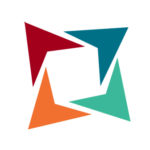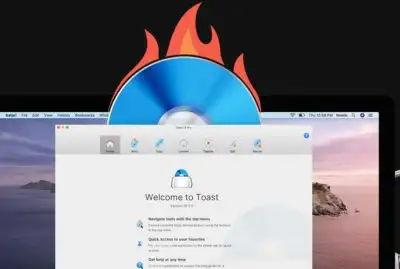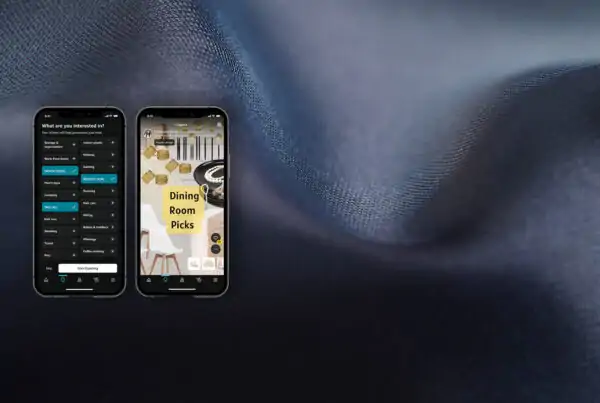0-9 A B C D E F G H I J K L M N O P Q R S T U V W X Y Z
0 – 9
- 301 Redirect:
- Used to indicate a permanent move of a web page from one location to another. The 301 redirect is the correct way to indicate a permanent shift of domain or file location.
- 302 Redirect:
- Temporary redirect. Used when a page is moved for a short while.
- 404 Error:
- Error code displayed when a page is not found on the server.
- 404 Error Custom Page:
- A customised page displayed upon occurrence of a 404 error, instead of the default browser or server error page.
A
- Algorithm:
- A mathematical formula used to determine the value of a page when compared against others.
- ATF (Above the Fold):
- This is the part of the user’s screen that is always displayed.
- Anchor Text:
- Also known as Link Text, the clickable text of a hyperlink.
- ALT Text:
- The text that appears when you put your mouse on top of an image or a picture.
- Authority Site:
- A site that has many In-Bound links coming to it, and very little outbound links.
- AdSense:
- AdSense is a program run by Google that allows publishers in the Google Network to serve text, image, video, or interactive media advertisements automatic. These ads may be targeted to site content and audience.
- Affiliates:
- Publishers who display an advertiser’s content or advertisements in exchange for a results-based commission payment. Affiliates may be part of a network or may sign up on a brand’s affiliate programme directly.
B
- BTF (Below the Fold):
- This is the part of the user’s screen that is hidden unless the user scrolls down on the page.
- Blog:
- A “Web Log” that is updated frequently and is usually the opinion of one person. Also joking stands for Better Listing on Google.
- Black Hat SEO:
- A term referring to the practice of “unethical” SEO. These techniques are used to gain an advantage over your competition.
- Banned:
- A term that means a site has been removed from a search engine’s index.
- Banner advertising:
- Creation of online banner images and placement such that internet users find them easily and are attracted to them. Clicking on a banner ad usually redirects users to a specific landing page.
- Bounce Rate:
- Percentage of visitors who leave a website on the entry page without clicking further into the website. A high bounce rate indicates that visitors are not finding what they were looking for on the page.
- Browser:
- Software application used to browse the internet – Google Chrome, Mozilla Firefox and Internet Explorer are the 3 most popular browsers.
- Bot:
- Short for robot. Often used to refer to a search engine spider.
- Business intelligence:
- The process for increasing the competitive advantage of a business by intelligent use of available data in decision making.
C
- Cache:
- Snapshot of a web page as it looked when it was indexed by the search engine spiders. The cached pages on Google usually contain the page text and all links on the page.
- Call to Action
- Any on-page element that indicates a specific action that users are expected to take on that page. This could be in the form of a heading requesting users fill in a form or a button telling users to buy an item.
- Click Fraud:
- The act of clicking on a competitor’s PPC paid ads on the search engines in order to run them through their budget and eliminate them from the listings or just simply to make them spend money on clicks which arent from genuine customers. Click fraud is frowned upon by the search engines and can have legal rammifications for offenders.
- Cloaking:
- A technique that shows keyword stuffed apges to a search engine, but a real page to a human user.
- Cookies:
- Small files that can be created and written to by a programming/scripting language. Usually holds information about the times and dates you have visited a web site, but can also save information about online purchases, login names, passwords, and more.
- Copy:
- Text found on a web page.
- Contextual Advertising:
- Paid advertising where listings appear on websites containing content relevant to the ads. A keyword search isn’t required for the listings to appear. Contextual advertising is usually featured on the search engine’s content network. Publisheers insert code into their web pages to allow the search engines to automatically serve ads based on content relevancy.
- Conversion Optimization:
- Transforms your site into a selling tool – your site logically leads visitors through the sales cycle and closes sale.
- Conversion Rate:
- The number of visitors to a website that end up performing a specific action that leads to a conversion. This could be a product purchase, newsletter sign up or anything where information is submitted.
- CPA (Cost Per Acquisition):
- The average cost incurred to acquire a sale or lead. Can also be measured as cost per conversion, though strictly speaking CPA refers to sales i.e. customer acquisition.
- Crawler:
- A bot from a search engine that reads the text found on a website in order to determine what the website is about.
- CSS (Cascading Style Sheets):
- Used to define the look and navigation of a website.
- CPC (Cost Per Click):
- The amount it will cost each time a user clicks on your ad.
- CPM (Cost Per Thousand Impressions):
- The amount it will cost an advertiser to show their ad a thousand times on any site. This term is used more frequently when referring to display advertising and traditional media purchases. This is an alternative pricing model Google offers for site-targeted advertising.
- CTR (Click Through Rate):
- The value associated to the amount of times a paid ad is viewed.
- Custom Error Page:
- A customised page displayed upon occurrence of a 404 error, instead of the default browser or server error page.
- Content Marketing
- The process of promoting a piece of content – text, images, video, audio – with the aim of building brand recognition and/or driving traffic to your site.
D
- Database:
- A database is a collection of information, stored in a computer, which can be readily accessed when needed.
- Data centre:
- The physical location where electronic information is housed. The data centre of a hosting company is the place where Internet files are stored on servers, accessed by unique IP addresses.
- Data mining:
- Analysis of vast quantities of data to find precious information about customers, suppliers etc. Involves elementary analysis and multi-point statistical and temporal analysis.
- Dangling Link:
- This term is applied to a web page with no links to any other pages. Also known as an Orphan Page.
- Dead Link:
- A hyperlink pointing to a non-existent URL.
- Deep Crawl:
- Once a month, Googlebot will crawl all of the links it has listed in it’s database on your site. This is known as the Deep Crawl.
- Delisting:
- When a site gets removed from the search index of a search engine.
- Demographics:
- Statistics about customers that refer to external life patterns – such as age, sex, income level, education, size of family, etc.
- Description Meta Tag:
- Special HTML tag in the ‘Head’ section of an HTML document. Contains a brief description of the content found on the page.
- Direct marketing:
- Marketing efforts that are targeted directly and proactively towards the customer, such as marketing via email, physical mail, fax etc.
- Directory:
- Usually human edited, a directory contains sites that are sorted by categories.
- DNS (Domain Name System):
- A protocol that lets computers recognize each other through an IP Address, whereas the human sees a website URL.
- Doorway Page:
- A web page designed to draw in Internet traffic from search engines, and then direct this traffic to another website.
- Dynamic Site:
- A site that uses a database to store it’s content and is delivered based on the variable passed to the page.
E
- Email marketing:
- Promotion of products and services to customers via email.
- EPC (Earnings Per Click):
- How much profit is made from each click from a paid ad.
- EPV (Earnings Per Visitor):
- The cost it takes to make profit from a site’s total number of visitors.
- External Link:
- A link that points to your website from another website.
F
- FFA (Free For All):
- A site where anyone can list their link. Don’t waste any time submitting your site to these places.
- Frequency:
- The average number of times an advertisement is shown to the same unique user. Frequency, together with reach, determines what percentage of people are being targeted and how often they are seeing the message from your company.
- Filter Words:
- Words such as is, am, were, was, the, for, do, etc, that search engines deem irrelevant for indexing purposes. Also known as Stop words.
- FTP (File Transfer Protocol):
- Technology that allows file transfers from a local machine to a remote host.
G
- Google:
- Currently, the world’s #1 search engine. www.google.com
- Google AdWords:
- Google’s advertising platform. adwords.google.com
- Google Analytics:
- Google’s website visitor tracking and analysis service. Formerly known as Urchin. www.google.com/analytics
- Google Bombing:
- A technique where a large number of people linked to a certain page, usually of irrelevant content in order to make it rank for a specific term. This practice no longer works as Google recognised it was used mainly to play a prank on public figures and tweaked their algorithm to require the terms being bombed to actually be present on the site.
- Google Sitemaps:
- Recently renamed to Google Webmaster Tools
- Google Toolbar:
- A browser plugin in the form of a toolbar featuring a Google search bar, as well as other Google tools.
- GoogleBot:
- The spider that performs a deep crawl of your site.
- Googlebowling:
- To nudge a competitor from the serps.
- GOOGOL:
- This is the term that inspired the creators of Google to use this name – it means: 10100 = 1 followed by 100 zeros
H
- .htaccess:
- Short for Hypertext Access. This is the default name of the Apache configuration file. This is where 301 redirects, custom error pages and mod_rewrite can be specified
- Hidden Text:
- Text that can’t be seen normally in a browser.
- HTTP (Hypertext Transfer Protocol):
- It is a generic, stateless, protocol which can be used for many tasks.
- HTTPS (HyperText Transfer Protocol Secure):
- It is a generic, stateless, protocol which can be used for many tasks, but has security features enabled to protect sensitive data.
- Hub:
- A site that has many outbound links, and few sites linking back.
I
- Inbound Link:
- A link residing on another site that points to your site.
- Index:
- A term used to describe the database that holds all the web pages crawled by the search engine for each website.
- Information Architecture:
- The gathering, organizing, and presenting information to serve a purpose.
- Internal Link:
- A link that points to another page within the same site. Most commonly used for navigation.
- Internet:
- An interconnected system of networks that connects computers around the world via the TCP/IP protocol.
- Interstitials:
- Loads a commercial in the background of a Web page. When the user exits the page, the user gets served a full-page, between-page advertisement in Flash, an animated gif or other rich media.
- IP (Internet Protocol):
- This protocol allows for machines to communicate to each other via the Internet.
- IP Address (Internet Protocol Address):
- how data finds its way back and forth from your computer to the internet.
J
- js (JavaScript):
- A scripting language that provides browser functionality.
K
- Keywords Meta Tag:
- Tag in the ‘Head’ section of an HTML document. Contains a list of keywords that are found on the page.
- Keyphrase:
- A group of words that form a search query that is relevant and important to a website owner.
- Keyword (KW):
- Used to define the terms a user might enter into a search engine to find information on their query.
- Key Performance Indicator (KPI)
- The main metrics that indicate the success or progress of any activity. In the online marketing industry, KPIs generally refer to marketing metrics such as clicks, online sales and costs, that are used to measure a marketing campaign.
L
- Landing Page:
- Usually used in conjunction with a PPC campaign, they are call-to-action pages that prompt the user to engage the site.
- Latent Semantic Indexing (LSI):
- A technique in information retreival used to process large natural language documents, such as websites, to identify the overall focus of the document by tackling two main problems – identifying synonyms and differentiating polysems (same word with multiple meanings).
- Lead:
- A person or company who has expressed some sort of interest in your company’s products or services. Leads may come in as ordinary inquiries or with an intention to buy.
- Link:
- Also known as a hyperlink, it is the “clickable” area of text or image that allows for navigation on the Internet.
- Link Bait
- Any content that is created specifically to attract links to your website is considered to be bait. Link bait refers to the practice of creating high quality, interesting, at times viral content that users are likely to share on their social profiles, blogs and websites and link back to your site in the process.
- Link Farm:
- A site that features links in no particular order which are totally unrelated to each other.
- Link Popularity:
- How many sites link to your website.
- Live Search:
- The old name of bing, after it was separated from MSN and launched as a stand-alone search site. Launched along with Live.com and Live Local in the UK and US. Harnessed social search technology to provide personalised search and information.
- Link Text:
- The clickable part of a hyperlink. Also known as Anchor Text or Anchor Link.
- Localised:
- Refers to search results that have been ranked according to relelvance as well as proximity to the users physical location or a location specified along with the search query .
- Log:
- A file that records all connections to a server.
M
- Meta Tags:
- Special HTML tags in the “Head” section of an HTML document. The most important and commonly used Meta Tags are the Title, Description and Keywords tags.
- Meta Search Engine:
- A search engine that relies on the meta data found in meta tags to determine relevancy.
- Metadata:
- Meta tags or what are officially referred to as Metadata Elements, are found within the section of your web pages.
- Market research:
- Investigation of the business and customer base where the products or services are sold. The aim is usually to gain a better understanding of customer behaviour and motivators to buy products / services.
- Marketing agency:
- A company that provides marketing services to other companies. Can be considered as a business whom other companies outsource marketing work to.
- MMS:
- Multimedia Messaging Service. Standard for mobile phone messaging systems that allows sending messages that include multimedia objects (images, audio, video, rich text) and not just plain text as in Short Message Service (SMS)
- MSN Search:
- Microsoft’s search engine. Was later separated from the MSN brand and called Live Search.
- mod_rewrite:
- A complex server directive that enables rewriting of URL’s on the fly, based on a set of rules that have been specified.
N
- Natural Listing:
- A listing that appears on the left side of the search engine results pages, typically below the ads. Also known as Organic Listings.
- Nofollow:
- An attribute used in a hyperlink to instruct search engines not to follow the link and pass PageRank.
O
- Off-Page Factors:
- Factors that alter search engine positions that occur externally from other website’s. The number and quality of links from other sites pointing to yours is one of the main off-page factors that Google considers when ranking your site.
- On-Page Factors:
- Factors that determine search engine positions that occur internally, within the pages of a website. This can include site copy, page titles, and navigational structure of the site.
- Over Optimization Penalty:
- A theory that applies if one targets only 1 keyword or phrase, and the search engines view the linking efforts to be spam.
- Organic Listing:
- The natural results returned by a search engine.
- Outbound Link:
- A link from your site to any other site.
- Offer:
- A promotion put to the customer prior to the customer’s consent to buy. The offer becomes a contract when the completed offer form is returned to the vendor.
- Online marketing:
- Marketing products and services on the internet.
- Overture:
- One of the first PPC advertising services. Formerly known as GoTo. Acquired by Yahoo! and renamed Yahoo! Search Marketing
P
- Page View:
- Every time a user looks at any page on a website through their browser, a tracking service counts this as a page view.
- Pay Per Click (PPC):
- A system of advertising where advertisers pay a provider for every user click through to their website.
- Pay For Inclusion (PFI):
- A system in which a site pays to get a guaranteed listing.
- Pay For Performance (PFP):
- A system in which payment for services is only made when a conversion takes place.
- PR (Google PageRank):
- Google’s unique system of how it tries to predict the value of a pages rank.
- PR (Public Relations)
- Communications between an organisation and the public, usually via the media. Online PR refers specifically to public relations on the internet.
- Personalisation:
- The method of curating a marketing communication to make it specific to an individual, such as by using their name and/or address on the communication.
- Panda
- The code name given to Google algorithm updates that identified websites with low quality content and penalised them.
- Penguin
- The code name given to a series of Google algorithm updates that specifically targeted websites with low quality link profiles.
Q
- Quality Score:
- Number used by Google when measuring the quality of your keywords, based on the click-through rate for the keyword, relevance of the actual ad’s text, historical performance, landing page performance and other relevancy factors.
- Query:
- An inquiry that is entered into a search engine in order to get results.
R
- Rank:
- The actual position of a website on a search engine results page for a certain search term or phrase.
- Reciprocal Link:
- When two sites link to each other.
- Redirect:
- Either server side or scripting language instruction that tells the search engines and browsers to load another URL automatically.
- Referrer:
- A referrer is the URL of the page that the visitor came from when he entered a website.
- Relevance:
- Term used to describe how close the content of a page is in relation to the keyword phrase used to search.
- Robot:
- Often used to refer to a search engine spider.
- Robots.txt:
- A plain text file placed in the root folder of a website to provide index / crawl guidelines for search engine spiders. This file is used chiefly to restrict search engine access to certain parts of a website.
- Response Rate:
- The gross responses received from a direct marketing program as a percentage of the total number of direct mail pieces sent or contacts that were made with readers or viewers.
- ROI (Return on Investment):
- The cost incurred in order to see success on your marketing investment.
- RSS (Rich Site Summary or Rich Site Syndication):
- A format used to share content using an XML feeds publicly on the internet.
S
- Search Engine:
- A web based information retrieval program.
- Search Engine Marketing (SEM):
- The practice of getting a website found on the internet
- Search Engine Optimization (SEO):
- All of the processes aimed at improving the organic ranking of a website on a search engine.
- Search Query:
- The text entered into the search box on a search engine.
- SERP (Search Engine Results Page):
- The results that are displayed after making a query into a search box.
- Sitemap (Site Map):
- A page that lists all of the critical navigation points of a website.
- SMS (Short Message Service):
- Text messages sent to/from mobile phones using GSM communication. SMS are brief and usually limited to 160 or 224 characters.
- Snippet:
- The text displayed from a search query.
- Spam:
- Unwanted email or irrelevant content delivered.
- Spamming:
- The act of delivering unwanted messages to the masses.
- Stop Word:
- Stop words are very common words such as ‘a, the, and & that’ and are filtered out of your search query. Search engines do this in order to try to serve the best results for a user query.
- Strategic Linking:
- A thought out approach to getting websites to link to your site.
- Seasonality:
- A pattern in customer behaviour in which response shows variation with the changes of season. Every product should be tested to see if there are certain months which will outperform others.
- Structured Data
- Any information that is typically contained within a database and can be attributed to a fixed field. E.g. product name, product price and product colour.
- Schema
- Special HTML markup that identifies structured data in websites. Schema are used to facilitate search engine indexing of data on a web page.
T
- Title Tag:
- HTML element within the ‘Head’ section of a page. Used to provide a title to the web page.
- Top Level Domain (TLD):
- Most commonly thought of as a “.com”, also includes “.org” and “.edu”
- Tracking URL:
- Usually used in PPC campaigns, it is a URL that has special code added to it so that results can be monitored.
- Traffic:
- The number of visitors a website receives over a given period. Usually reported on a monthly basis.
- Transactional Query:
- A query where the user expects to conduct a transaction.
- Third-party Content
- Content that has been created by someone outside of your organization. This may be content that was sourced exclusively for your use or shared widely on the Internet.
U
- Unique Visitor:
- When a user visits a website, his/her IP address is logged so if he/she returns later on that day, the visit won’t be counted as a unique visit but as a page impression.
- Urchin:
- Free website visitor tracking solution owned by Google. Now called Google Analytics.
- URL (Uniform Resource Locator):
- Commonly referred to as the domain name, this is how humans navigate through the Internet, whereas computers use IP addresses.
V
- Visitor Stats:
- Information about visitors that use a website. Visitor stats include webpages visited, time spent on each page, referring page etc.
- Visitor Log:
- A log is a file that records all connections to a server. The visitor log specifically refers to the record of all visitors to a website, and includes information such as the referring source, the time of the visit, the pages visited etc.
W
- W3C (World Wide Web Consortium):
- International consortium working to develop Web standards. W3C creates Web standards and guidelines designed to ensure long-term growth for the Web. Over 400 organizations are Members of the Consortium. W3C is jointly run by the MIT Computer Science and Artificial Intelligence Laboratory (MIT CSAIL) in the USA, the European Research Consortium for Informatics and Mathematics (ERCIM) headquartered in France, Keio University in Japan, and has additional Offices worldwide. http://www.w3.org/
- WAP (Wireless Application Protocol):
- Secure specification that allows users to access information instantly via handheld wireless devices such as mobile phones, pagers, PDAs, smartphones and communicators.
- White Hat SEO:
- A term that refers to ethical practice of SEO methodologies that adhere to search engine Terms of Service.
- WWW (World Wide Web):
- Another term to describe the Internet.
X
- XML:
- XML stands for Extensible Markup Language (filename.xml) – A scripting language that allows the programmer to define the properties of the document.
Y
- Yahoo!:
- The 2nd most popular online destination in the world. www.yahoo.com
- Yahoo! Search Marketing:
- Pay per click advertising program for Yahoo! and its search and content partners Formerly known as Overture. Now outsourced largely to Microsoft Advertising
Z
- Zeitgeist:
- The Google Zeitgeist page reflects tidbits of information related to the search behavior of Google users. It pulls together interesting search trends and patterns, automatically generated based on the millions of searches conducted on Google over a given period of time – weekly, monthly, and annually.
About the Author
AccuraCast is a digital marketing agency focused on international growth. Founded in 2004. Specialists in generative AI engine optimization, social media marketing, search and programmatic display advertising and search engine optimisation in all major global languages to businesses worldwide. Offices in London, New York and Madrid.











